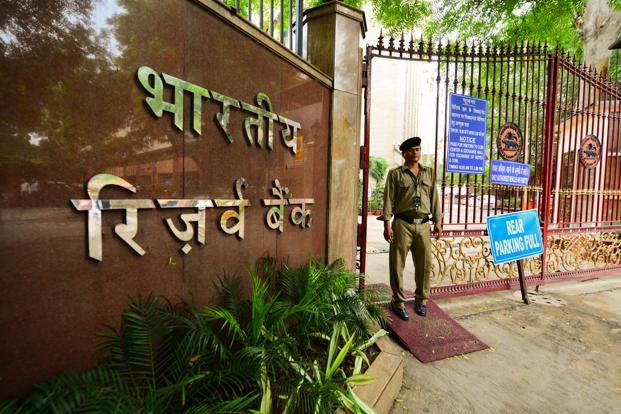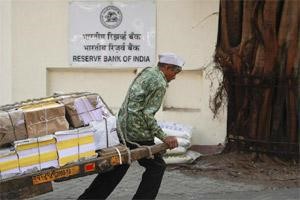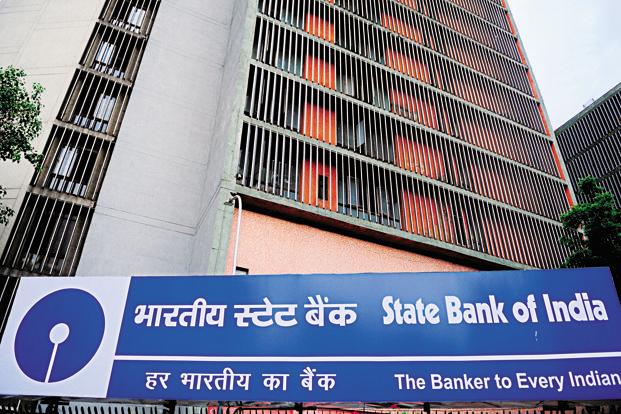In early morning trading on Tuesday, the yield on the benchmark 10-year bond touched 9.49%. At this pace, it might cross double digits in a day or two—a level last seen in May 2001.
By the end of the day, however, it closed at 8.925%, tracking the rupee which opened at 64.12 a dollar but ended trading at 63.23, a new closing low for the currency. The rupee recovered on heavy dollar sales by state-run banks on behalf of the Reserve Bank of India (RBI). But more important than that, the bond market sensed that a special relief was on the way from RBI.
Rising bond yields affect all constituents of the market. Here’s how:
Depreciation loss for banks: At a yield of 9.49%, banks were sitting on a deprecation loss of more than Rs.50,000 crore. Theoretically, the loss will increase if the yields rise further and decline if they come down, and it will erode part of their capital. But they will not have to book such a huge depreciation loss as RBI has allowed them to shift part of their bond portfolio to a category which shields bonds from depreciation losses. More on this later.
Since most of them are state-owned banks, the government will have to recapitalize them if they need capital. For the current fiscal, the government has budgeted Rs.14,000 crore for bank recapitalization and that will be insufficient.
Higher fiscal deficit: The government’s woes do not end there. It will have to pay much more for its borrowing from the market. So far, it has completed about 47% (Rs.2.17 trillion) of its record high Rs.5.79 trillion gross market borrowing programme for fiscal 2014. As it will have to pay more, the higher cost will impact India’s fiscal deficit.
Higher loan cost: Finally, even though the bond market and the credit market are two very different animals in India, there will be a spillover effect and loans will become more expensive for corporations as well as individuals. The interest on corporate bonds is on the rise and some private banks have already raised their base rate or the minimum lending rate. But for the government pressure, state-owned banks would have raised their loan rates too.
What are the options before RBI? Can it do anything to bring down the cost of the government’s borrowing?
In some sense, there is no surprise in the bond yield crossing 9% and inching towards 10%. One can argue that it should have happened much earlier, but for RBI’s bond-buying from the market through the so-called open market operations (OMOs, or simply the buying or selling of bonds in the open market so as to increase the amount of money in the system or reduce it). In the past few years, RBI has been conducting OMOs. Such operations, apart from infusing liquidity into the system, also “manage” bond yields.
RBI did this to ensure that the cost of government borrowing remained low. For far too long, it allowed the 10-year bond yield to remain lower than India’s wholesale inflation rate.
It can launch OMOs even now to tinker with the bond yields, but this will not be very easy—RBI does not want to infuse liquidity into the system when the rupee is under attack. In fact, it has taken a series of measures since 15 July to drain liquidity and increase short-term rates to attack speculators on the local currency. So, any OMO has to be done skilfully, balancing liquidity injection, and curbing excessive volatility in the bond market. On Tuesday evening, RBI announced an OMO of long-dated government papers to infuse liquidity, reversing its earlier hard stance.
India’s central bank may have to cancel a few bond auctions and allow the market to settle down, provided the government’s cash position allows it to do that.
The other option could be auctioning short-term paper for the time being and selling long-term bonds only after the market stabilizes. Again, there is a hitch here, as redemptions of too many papers are staring the government in the face (most will happen in the next two years). The sale of short-term paper will only add to the queue and put pressure on the government.
Finally, yields were rising in a very thin market (bond dealers call this a “fractured” market) as state-owned banks are almost abstaining from trading. The volume of bond trading, which hit a historic high of Rs.1.43 trillion in May, is now around Rs.11,000-12,000 crore, one-third the average daily volume seen in the past two months.
State-owned banks were not buying bonds as they have already made huge deprecation losses in the bonds kept in the available-for-sale (AFS) and held-for-trading (HFT) categories. They wanted to shift part of their bond holding from these two categories to the held-to-maturity (HTM) basket as bonds kept there are shielded from depreciation losses.
Typically, banks can do that twice—in April and October—but they wanted RBI to allow them to do this now to protect their balance sheets from booking huge mark-to-market (MTM) losses and the central bank has obliged them.
MTM is an accounting practice of valuing a financial asset in accordance with its current market value and not at the cost of acquisition. Banks need to calculate MTM losses or gains daily for bonds kept under HFT and once in a quarter for bonds under AFS categories.
RBI has allowed them to transfer bonds from AFS and HFT categories to the HTM basket as a one-time measure with retrospective effect at the close of business on 15 July. This is nothing but a bailout of banks. Allowing them such a shift with a retrospective effect is a retrograde state, laced with a moral hazard. This might encourage banks to punt in the market in future. Banks were happy making money when the going was good and interest rates were moving south, but they rushed to knock at RBI’s door seeking concessions when the tide turned against them.
With the central bank taking a call on this, state-owned banks will come back to the market. Till the first half of Tuesday, there weren’t too many buyers in the market and even a small deal had an exaggerated impact on yields. RBI’s action will bring volume back, which is critical for stability, but it has sent a wrong signal to the punters in the bond market.



